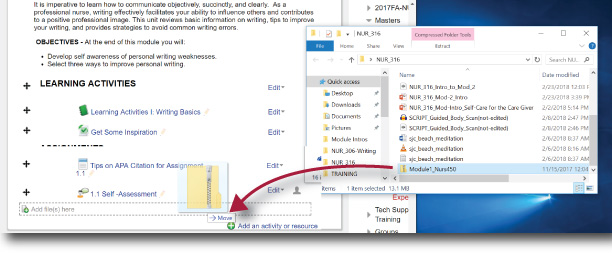Digital Accessibility: MS Word Tables (4)
Tables organize information visually and help you show relationships between things. Learn how to set up tables so they can be read out loud to people who use a screen reader.
Your table now has a header row. This means that, behind the scenes, Word and any assistive technologies can communicate intelligently about the table.
Your table now has column names, which makes it easier to understand the information that the table contains. Some screen readers can be set up to read column names at any time, which can help when working with a large table.
To add a header row to a table
- Choose Insert > Table to insert a table.
- Choose the number of boxes you want across to create columns, and then choose the number of boxes you want down to create rows for your table.
- Note: When you add a table to your document, two new tabs to appear in the ribbon: Design and Layout. These are the Table Tools.
- On the Design tab, choose the Table Styles Options group, and then choose Header row. Other options include Banded Rows or Total Row.
Your table now has a header row. This means that, behind the scenes, Word and any assistive technologies can communicate intelligently about the table.
Add column headings
- Place your cursor in the first cell on the top row of your new table.
- Type the name for this column and then press Tab to move from one column to the next. Add additional column names as needed.
Your table now has column names, which makes it easier to understand the information that the table contains. Some screen readers can be set up to read column names at any time, which can help when working with a large table.
Check Accessibility of Tables, Before you Share
Your table now has the appropriate tags that will allow screen readers to properly interpret the information for learners. Be sure to run the accessibility checker before you distribute this document to learners or post to the learner management system.- MS Word Accessibility Checker
- A few more table tips for you:

